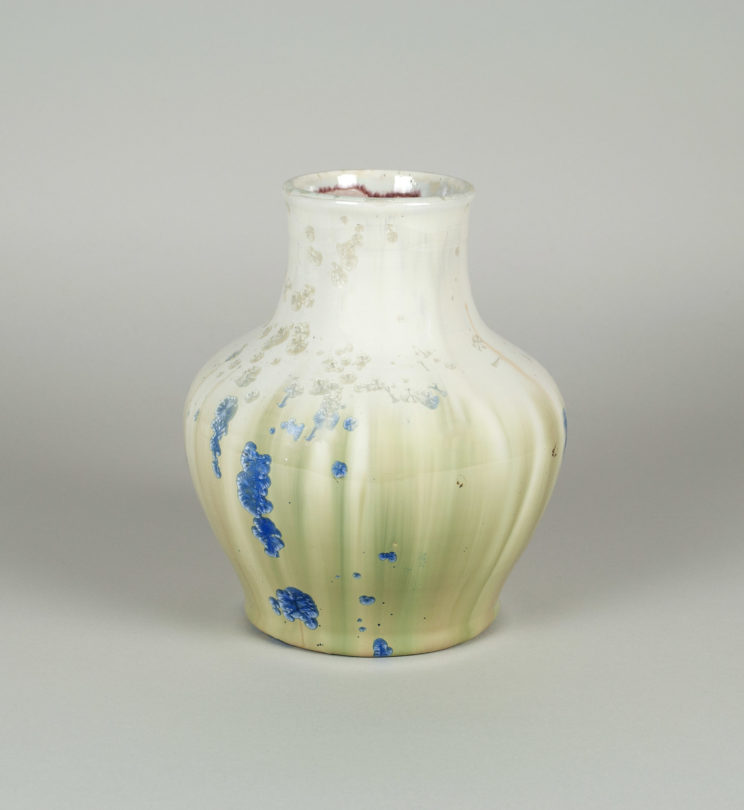Does the surface of this pottery remind you of anything? Perhaps a snowflake? Or a cluster of leaves? Crystalline glazes, used on this vase from Pisgah Forest Pottery, are not uncommon in pottery production but are quite difficult to perfect. Crystals form during the kiln firing process as a result of the presence of zinc silicate in the glaze, rapidly heated and cooled at just the right temperatures. Artist Walter B. Stephen achieved these surface effects using his hand-built, down-draft kiln, a large brick structure beside his studio. Rather than heating his kiln with coal, Stephen created his pottery “fired with wood from the mountain forests.”
Constantly experimenting, Stephen produced and sold objects with unique glazes and colors at Pisgah Forest Pottery, the studio he operated for nearly four decades in Arden, NC. Stephen was also known for producing fine blue pottery at Pisgah Forest from the 1920s onward. The artist researched and found great inspiration in Chinese pottery traditions but used differing techniques to achieve variations of the color. His favored shade of blue was turquoise, which was difficult to produce in a wood-fired kiln at that time in the United States.
Curating this exhibition, it has been a treat to spend time with the beautiful range of surface effects Stephen achieved in his pottery. With our Museum’s collecting strength in regional pottery, it has been a wonderful opportunity to showcase many examples by Stephen from the earlier part of the 20th century that will continue to be featured in our SECU Collection Hall.
—Alexis Meldrum, curatorial assistant
The exhibition Walter B. Stephen Pottery: Cameo to Crystalline is on view through Monday February 21, 2021.
 Pisgah Forest Pottery, Walter B. Stephen, Vase, 1935, glazed stoneware, 9 × 7 ¼ × 7 ¼ inches. Extended loan from the collection of Tom & Dorothy Case, EL1976.01.24.83. © Walter B. Stephen.
Pisgah Forest Pottery, Walter B. Stephen, Vase, 1935, glazed stoneware, 9 × 7 ¼ × 7 ¼ inches. Extended loan from the collection of Tom & Dorothy Case, EL1976.01.24.83. © Walter B. Stephen. 